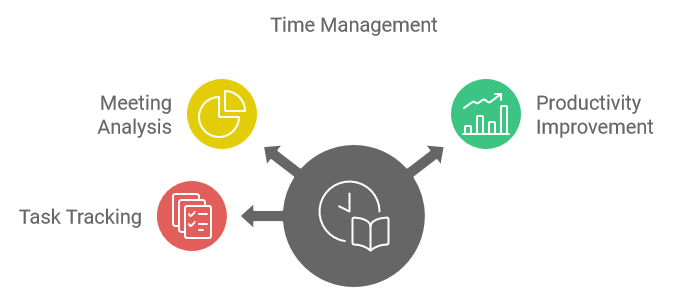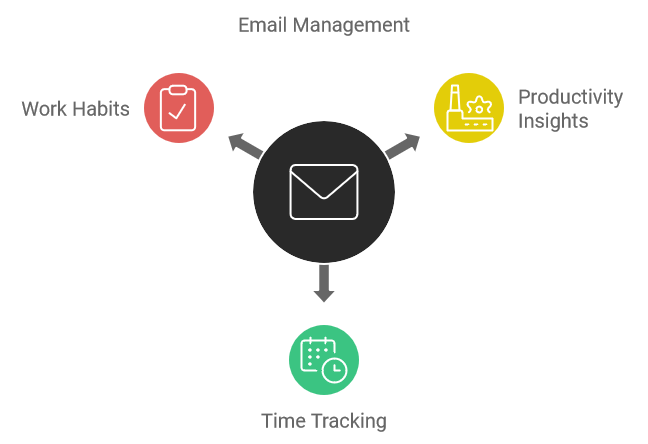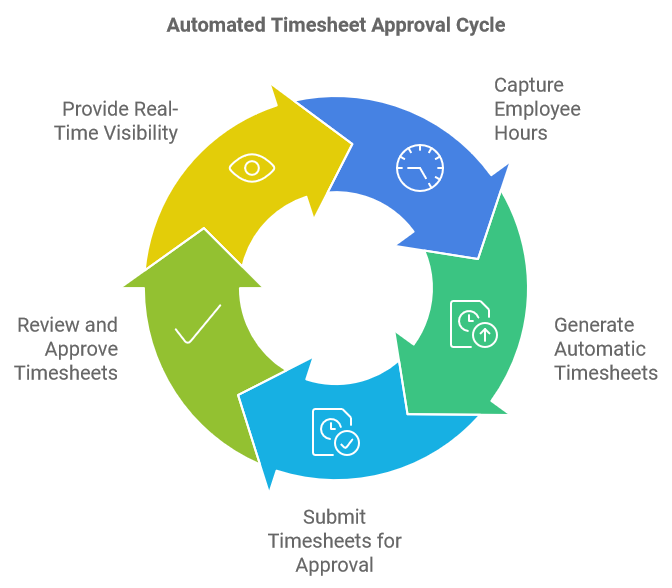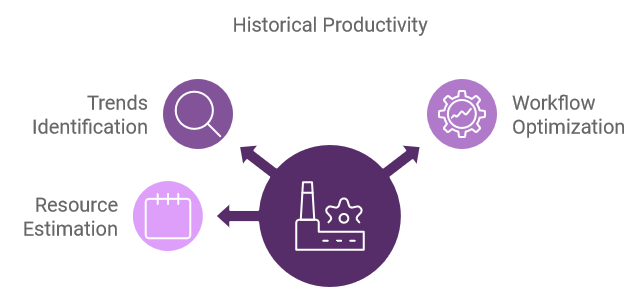How to track time spent on tasks with HiveDesk
Task time tracking is a powerful feature that empowers you to track your team’s work hours, set goals, and monitor progress.
4 min read
Now you can track time spent on each task with the HiveDesk time tracking software.
Follow these steps to use the task time tracking feature:
- Log in to the HiveDesk web app.
- If you have already created tasks, skip to step 5 below.
- Select the project in which you want to create tasks.
- Create and assign tasks to employees. You’re now ready to track time at the task level.
- When your employees start work, they will need to start the HiveDesk desktop application to track their time.
- The employees will see the following screen that shows all projects and tasks they are assigned by you.
HiveDesk will record the time spent on the task in the web portal.
That’s it!
You can now track time spent on tasks and get visibility into employee productivity. Compare the actual time spent on the task with your estimate so you can improve your estimates for future projects.
What is task time tracking?
Task time tracking is a powerful feature that empowers you to track your team’s work hours, set goals, and monitor progress. It is a valuable tool for optimizing employees’ efficiency and improve their time management skills.
You can use the task time tracking feature irrespective of the size and type of business. It allows employees to log their time on specific tasks, providing you with valuable insights into how your team is spending their time. This data can then be used to optimize workloads, identify areas for improvement, and boost productivity.
How does task time tracking help your business?
Task time tracking is an essential tool for boosting productivity in any workplace. It allows individuals and teams to measure the time spent on each task, identify inefficiencies, and improve their overall performance. By tracking the time spent on each task, individuals can better manage their workload, prioritize tasks, and set realistic deadlines.
It also helps to eliminate distractions and interruptions that can hinder productivity.
Managers can use task time tracking to monitor employee performance and identify areas where additional training or resources may be needed. Additionally, task tracking provides valuable data that can be used to improve project planning, resource allocation, and budgeting.
In today’s fast-paced business environment, task time tracking is an essential tool for ensuring that tasks are completed on time and to the highest standards of quality.
How to identify time-wasting tasks?
One of the key benefits of task time tracking is the ability to identify time-wasting tasks and minimize them.
By tracking the amount of time spent on each task, you can determine which tasks are taking up too much time and adjust your workflow accordingly. This allows you to focus your time and energy on the tasks that are most important and valuable, and eliminate or delegate the tasks that are less important or time-consuming.
With task tracking, you can gain valuable insights into your work habits and make informed decisions about how to improve your productivity and performance. So, if you want to maximize your productivity and minimize time wasted on non-essential tasks, consider using task time tracking as an essential tool in your professional toolkit.
How to track and analyze time spent on meetings?

You can easily track time your team spends on meetings:
- Create meetings as tasks in HiveDesk web app
- Your employees select the meeting task and start the timer when they join a meeting.
- When the meeting is over, the employees select the check box “Complete this task” and click the Submit button to record the time spent on the meeting
One important aspect of task time tracking is analyzing the time spent on meetings. Meetings are an essential part of any business, but they can also be a huge time drain, especially if they are unproductive or poorly managed.
By tracking the time spent in meetings, you can identify areas where improvements can be made, such as reducing the length of meetings or eliminating unnecessary attendees.
With HiveDesk task tracking software, you can easily track the time spent on each meeting and generate reports to analyze the data. This information can help you to identify patterns and make data-driven decisions to optimize your team’s time and productivity.
How to track and analyze time spent on emails?

One important aspect of task time tracking is monitoring the time spent on emails.
While email is an essential communication tool in most workplaces, it can also be a major drain on productivity if not managed properly.
By tracking the time spent on emails, you can gain insights into how much time is being wasted on unnecessary messages and how much time is actually being spent on important work-related correspondence.
This information can help you identify areas for improvement and make adjustments to your work habits to increase productivity.
How to track time spent on tasks for billing clients?
One important aspect of task time tracking is monitoring the time spent on emails.
While email is an essential communication tool in most workplaces, it can also be a major drain on productivity if not managed properly.
By tracking the time spent on emails, you can gain insights into how much time is being wasted on unnecessary messages and how much time is actually being spent on important work-related correspondence.
This information can help you identify areas for improvement and make adjustments to your work habits to increase productivity.
How to improve time and cost estimates for tasks?

Task time tracking is an important component of any project management system. One of the key benefits of using task tracking software is the ability to improve time and cost estimates for tasks.
By tracking the time spent on individual tasks, you can gain a more accurate understanding of how long each task takes to complete. This information can then be used to improve estimates for future tasks and projects, leading to more accurate timelines and budgets.
Additionally, task tracking can help identify inefficiencies in the process, allowing you to make necessary adjustments and further improve estimates.
By using task time tracking tools, you can improve your ability to accurately estimate project timelines and budgets, leading to greater project success.
How to use task time data for analyzing historical productivity data?

Analyzing historical productivity data is a crucial element of effective task time tracking.
By examining past performance data, you can identify trends and patterns that allow you to optimize future productivity. Historical data can reveal bottlenecks or inefficiencies that may be impacting your productivity.
With this information, you can adjust your workflow and prioritize tasks accordingly. Additionally, historical data can help you accurately forecast project timelines and budgets.
By understanding how long certain tasks take and how much effort they require, you can more accurately estimate timelines and resource needs for future projects.



